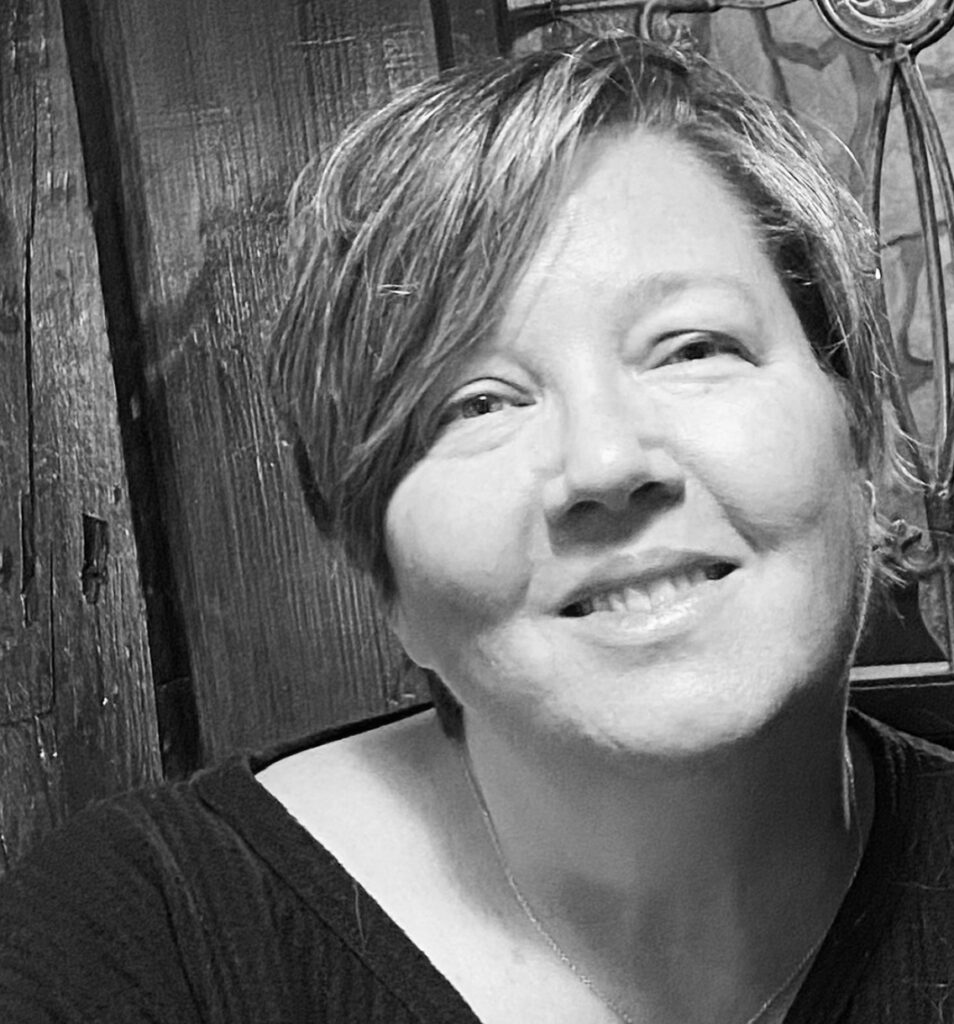
By Jamie Etheridge
I’m writing late into the afternoon when I see them. A fluffle of eastern cottontails scampering across the road. They move like raindrops on water. Plop. Bound. Leap. A wiffle of unreality. Midway, the mother rabbits pause. They rear up on hind legs. Freeze frame, except for twitching noses and ears alert. Baby rabbits bounce behind until the mothers stop. Then they freeze too, tiny noses pink and trembling.
I’ve never seen wild rabbits. Am amazed by this unexpected sight. Soft furred, silent and frozen still as statues. A man and dog pass on the sidewalk. The dog sniffs the lawn, blithely unaware of the marvel happening mere feet away. The rabbits tremble, unmoving. At last, the man and dog round the corner and in unison, these feral bunnies drop to all fours and hop, plop and scamper on.
The cottontails live in the woods behind our home. They brave the busy street to banquet on the Lilyturf and Brown Eyed Susans planted in our neighborhood’s manicured lawns. They sometimes appear at twilight, white tails luminescent, magic in the gloaming.
###
Magic is the light that sparkles in the sudden gloom, an astonishing insight that reveals some inner truth. The best creative nonfiction is magical. It sings. It surprises. It delights.
When reading submissions, I look for three elements in every essay. First, is craft. Craft is the walls and windows of writing. When considering craft, I ask: Do all the elements – language, scene, dialogue, setting, voice, metaphor, pacing, etc – work well together? Do they add up to something more, a sum that is greater than the essay’s parts? A well-written essay drives like a well-made car or refreshes like a beautiful meal. The best writing invites a reader in and effortlessly takes care of them. Craft communicates everything about a writer’s skills while revealing none of the writer’s effort and hard work. A well-written piece, crafted with precision, deftness, and expertise welcomes the reader home.
Once the reader accepts a writer’s invitation, it is incumbent upon us to provide an experience. The second key to great creative nonfiction, therefore, is growth or movement. Does the essay take the reader on a journey? Do we end up somewhere different? Somewhere wiser, better, stronger? Somewhere with insight and understanding? ‘To essay’ means to try and try we must; to understand, to accept, to explore. The creative impulse derives from our very human need to know. Why did this happen? Why did we react this way? What does it all mean? Where is this going?
Growth can happen in infinite ways. Often the most compelling movement or growth occurs on the emotional level, the grounding candor of the essay, what Dinty Moore calls the ‘invisible magnetic river’, the narrative’s emotional truth. An essay without an emotional throughline might be expertly crafted but will always read as incomplete and soulless.
Truth is not only emotional in CNF but also factual. We write creative nonfiction because the truth compels us, the facts might be cold and hard or soft and warm as a rabbit’s fur. Either way, we chose nonfiction and that means building our work on a foundation of facts.
But facts do not preclude magic. This is the third element in great creative nonfiction. What is magic? Magic can be: A tinkling laugh. A firefly flickering in the woods at dusk. His fingers brushing against mine. In art, magic might be the lilt of a song, the turn of a story, the morning light captured in watercolor.
Magic can be found everywhere—wonder or surprise, a gentle unexpectedness that allows us to see the extraordinary in the everyday. I’m not speaking of the sleight of hand, twist at the end sorcery of performance. No. I mean the alchemy of experimentation, of transformation, of exploration and enchantment. Magic helps us fend off the darkness. It can be the moment that changes us, that changes the narrator.
However, magic cannot be commanded, only encouraged. Magic is what happens when we hone our craft, follow the flow of our writing, and invite the unexpected. It can appear out of nowhere, at the point where the mundane meets the unexpected, like a colony of feral bunnies frozen in the middle of the road.
Want more magic in your life? Read magical creative nonfiction in Reckon Review:
We are a family like a circus is a family: weirdoes brought together for shared purpose but different acts. (Miriam Gershow, Fly and Fly)
“The trick is to burn the curry,” Johnson said, as he shook out some yellow curry powder into the oil sizzling in the wok. (Charmaine Arjoonlal, Of Curry and Men)
“I made my own history in that room and it remembers me. As for the house, I say goodbye. Goodbye to the home that shared my family’s history. But the history, I take that with me. That is the item I choose to keep.” (Aarron Scholar, Home)
Read more of Jamie’s work here.

Jamie Etheridge
Jamie Etheridge is CNF Editor for Reckon Review. She has writing in Anti-Heroin Chic, Bending Genres, Essay Daily, Identity Theory, JMWW Journal, Pithead Chapel, Reckon Review, X-R-A-Y Lit and elsewhere. Jamie previously served as CNF editorial assistant for CRAFT Literary. She was longlisted for the WIGLEAF Top 50, is a Fractured Lit Anthology II prize winner and Kenyon Review Developmental Fellowship Finalist; as well as Best Small Fictions and Best of the Net nominee. Twitter: Lescribbler. BlueSky: @lescribbler.bsky.social Website: LeScribbler.com.
